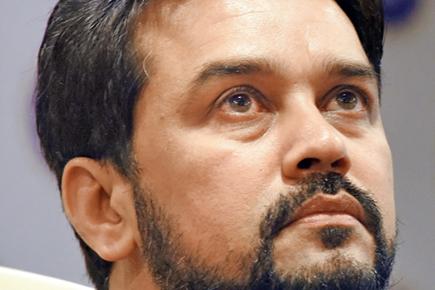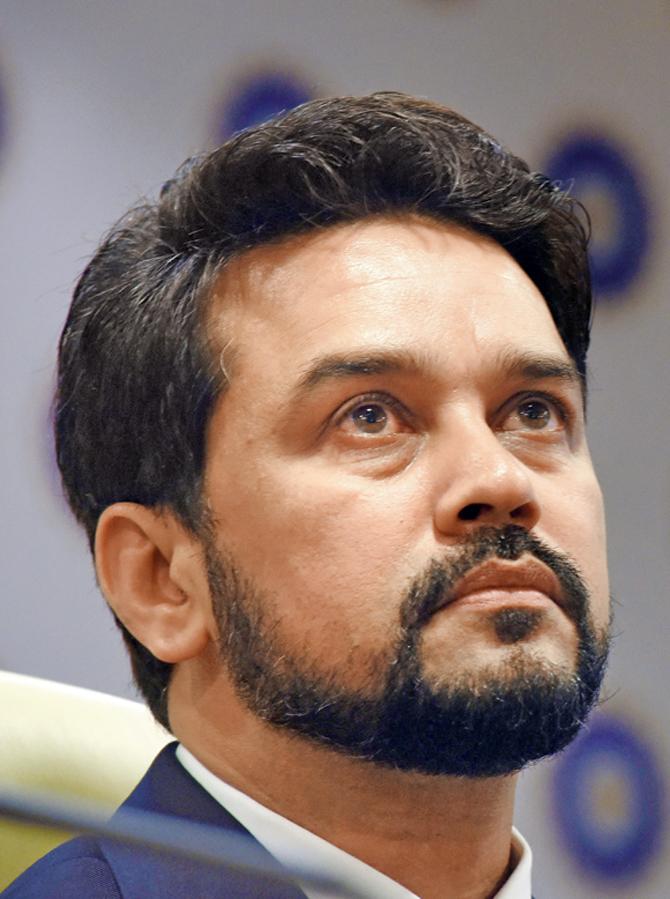Following his removal by the SC as BCCI President, we look at the good, bad and ugly parts of Himachal Pradesh man Anurag Thakur's 226-day tenure in the post

Anurag Thakur

Anurag Thakur had to vacate his BCCI chief's seat yesterday
ADVERTISEMENT
At the time of writing, Anurag Thakur’s Twitter profile introduced him as --3rd Term Member of Parliament (LS) | President @BCCI | Chairman Parliamentary Committee on IT | Member Public Accounts Committee. The Apex court on Monday though removed him as the BCCI chief.
For someone who held this post for a period of 226 days, it was a short yet eventful period, both for the man and the organisation. Thakur, was elected the unopposed head on May 22 last year, under normal circumstances his term was to end in September this year. However, since BCCI failed to implement the Supreme Court July 18, 2016 orders which asked them set their house in order it was inevitable that the man at the helm would have to bear the brunt as far as his career as a cricket administrator is concerned.
Even before he took charge as board president his biggest challenge was how he would deal with Justice Lodha committee’s verdict on BCCI’s functioning. Thakur, however, during his first presser as BCCI chief termed it as an "opportunity".
Now, that he is no longer in office, his stay can be divided into three phases.
THE GOOD
Becoming BCCI president at just 41 was a huge achievement for Thakur. It was largely because of his 16-years of good work as an administrator at the Himachal Pradesh Cricket Association. As a BCCI president too he initially made all the right noises saying that he was all for the better governance of the game in the country. In the end, though it looked more words and less action.
Promoting Test cricket is another good thing he did during his tenure – be it taking Test cricket to second-tier cities to tackle the issue of dwindling attendance at the traditional Test centres or doubling the player match-fee for playing a Test as an incentive to promote the format. He also announced the all the international venues will have numbered seats for better spectator experience.
THE BAD
The problem under his administration like some of his recent predecessors was always going to be a willingness to change BCCI’s working style. From July 18, 2016 till the morning of January 2, 2017 there were numerous instances when the board despite many warnings by the Apex court failed to adhere to its recommendations.
Infact even before he became president in February last year Thakur’s statement reflected resistance towards change. On once being asked about BCCI’s slow response to implement Lodha committee’s recommendation he had remarked "We need to understand it is not a one-page report. It is a detailed report, which will have a lot of consequences on the working and the functioning of the BCCI. A committee has taken close to 12 months to come up with it. We are taking close to two months to discuss, debate, and after deliberations come to a consensus to implement that report.”
THE UGLY
While Thakur was the BCCI’s face in the legal battle it wasn’t his fault alone that the court orders weren’t adhered to as various state cricket associations too weren’t very keen to implement them. Who knows what future holds for Thakur but the biggest mistake he is accused of having committed is 'perjury'. The court had earlier said that Thakur could be guilty of perjury after he in an affidavit, had denied that he sought a letter from the ICC stating that the Lodha Committee's recommendation to have a member of the Comptroller and Auditor General's office on the apex council of the BCCI amounted to government interference in the board. Thakur's request had been revealed by ICC chief executive David Richardson in an interview to an Indian TV channel.
 Subscribe today by clicking the link and stay updated with the latest news!" Click here!
Subscribe today by clicking the link and stay updated with the latest news!" Click here!






